Bimota transforms Kawasaki’s Ninja 1000SX into the sportiest ever sports tourer. Here is our first ride report.
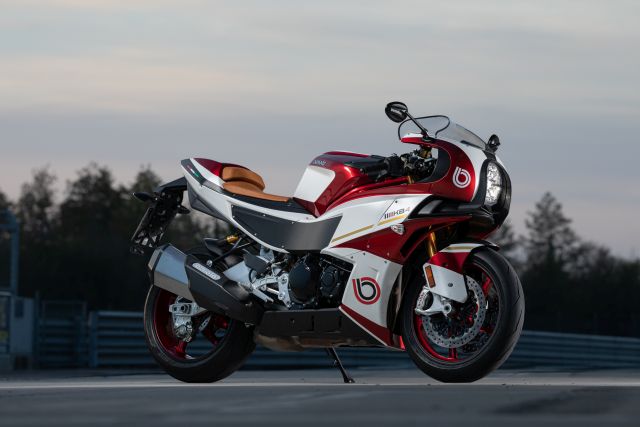
Story: Adam Child ‘Chad’
Photography: Ula Serra/Felix Romero
Back in pre-COVID 2019, Japanese giant Kawasaki bought a 49.9 per cent stake in the Italian chassis specialists, Bimota, and this, the KB4, follows the £60,000 (Rs 60 lakh) TESI H2 to become the second model to emerge from their burgeoning partnership.
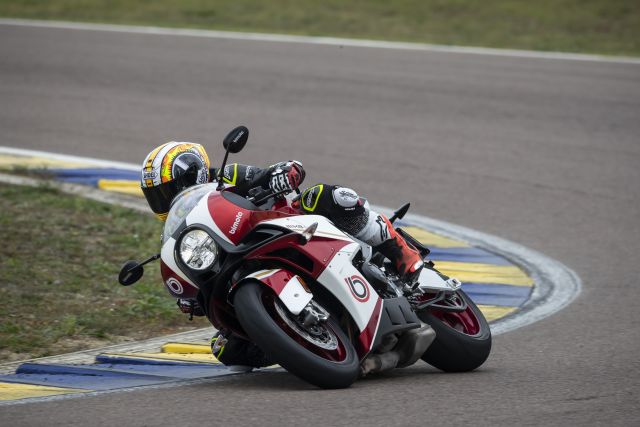
It is nothing new for Bimota to use Kawasaki engines—the first time was the Z-powered KB1 way back in 1977—so, it feels quite natural that the KB4 is built around a Kawasaki in-line four; fitting, too, that its retro look and “liquid red” paint act as evocative tributes to the now highly collectible early KB (for Kawasaki and Bimota) machines.
Today’s relationship with Kawasaki is, however, very different from that of yesteryears. Since the 2019 deal Bimota has had access to the Japanese manufacturer’s range of engines and ancillaries. Not only is the K4’s engine from Kawasaki, but so also are the electronic rider aids, fuelling system, exhaust, air-box, switchgear, clocks, and headlight even (stolen, in case you had not worked it out for yourself, from the Z900).
That means huge development-cost savings for Bimota, who is now free to pull fully tested, proven, and homologated parts from the Kawasaki shelf and focus on what it does best: designing and building sublime rolling chassis.
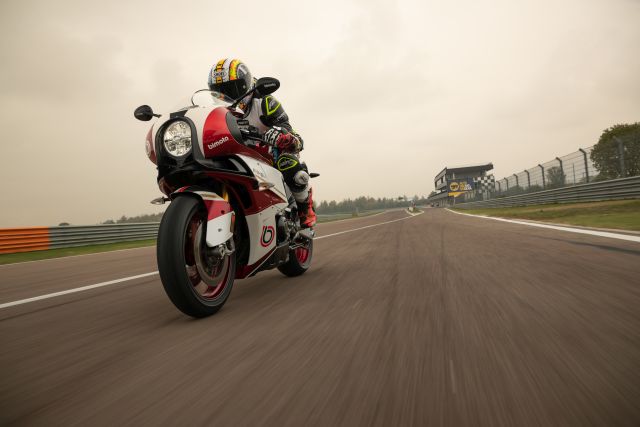
The KB4 frame is all Bimota and uses the Kawasaki 1000SX engine as a stressed member. An aluminium swing-arm gets bolted directly to the engine via a machined mounting plate. At the front, a steel trellis support gets bolted to the Japanese motor and holds the fully adjustable Öhlins NIX30 forks. Bimota wanted a short wheelbase, shorter than a Kawasaki ZX-6R, which means the engine is positioned as far forward as possible with the radiator mounted beneath the seat unit as there was not room between the front wheel and traditional radiator position. The radiator is fed cooling air via two unmissable carbon air scoops that run along both sides of the bike.
Bimota claims the KB4 is a sports tourer but elected to let us loose around the tight and demanding Modena racetrack in Northern Italy, just a stone’s throw from the Ferrari factory. This may be sports touring, but not as we have seen before.
As mentioned earlier, the 1,043-cc motor has been taken directly from Kawasaki’s popular Ninja 1000SX, which was updated in 2020. This means that power and torque are the same as the Kawa. If the Italians had changed any aspect of the engine, it would have proved costly and time-consuming as they would have had to go through the process of Euro-5 homologation once more, meaning ancillaries such as the fuelling system and exhaust are as found on the SX, too: proven and reliable.
Peak power is 142 hp at 10,000 rpm and peak torque is 111 Nm at 8,000 rpm. All the hard work has already been done by Kawasaki, already Euro-5, with proven reliability and excellent fuelling.
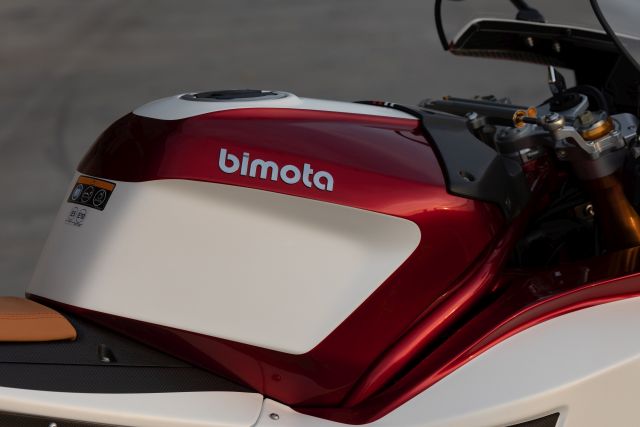
Kawasaki’s 1000SX has always been one of the sportiest of sports tourers. I have ridden every model since its press introduction in 2010 and covered 32,000 kilometres on a 2014 machine. The motor defines the SX; it has oodles of lovely torque, smooth fuelling, and it is easy to get along with. However, as I rode out of the pit-lane on my Bimota 1000SX, I was a little unsure how it would translate into the KB4’s short and sporty chassis.
I need not have worried. During the first few laps, while getting familiar with the bike and track, there was no need to dance up and down on the quick-shifter; instead, the SX’s surging torque drove the KB4 between corners, unconcerned whether it was second or third gear. The fuelling was super smooth, too, and just as SX fans have come to love. The KB4 felt relaxed and as easy to ride on the track as the Kawasaki SX is in the Alps. Anyone who is new to track riding will love the undemanding style of the KB4.
Come session two, I really wanted to know if the Kawa power could thrill on track when pushed harder. With Sports mode (one of the four riding modes) selected and the lean-sensitive rider aids reduced, it was time to have some fun. Quoted power is 142 hp and dry weight is just 189 kilograms, figures that place the KB4 not a million miles away from Suzuki’s legendary 150-hp GSX-R750, but the Bimota has more torque and is far easier to hustle despite being a little heavier.
In fact, the tight and twisty Modena track favoured the high-torque and relatively slow revving nature of the Bimota. In today’s world, you supposedly need 200 hp to be a track-day superstar but the KB4’s 142 hp was more than enough for me at this track.
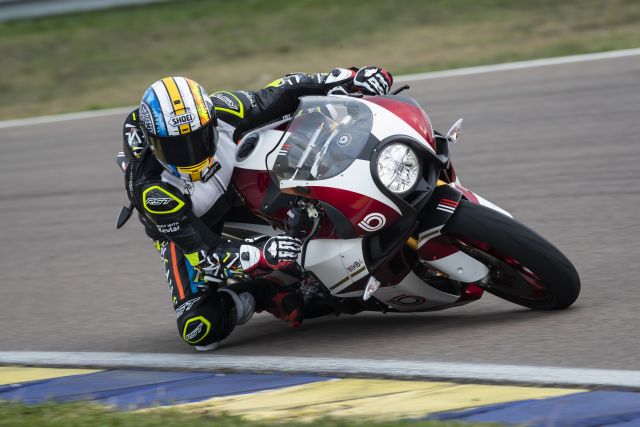
Even when I put the hammer down around the Ferrari test-track, I was never left wanting for horses. I will take a smooth and linear power delivery and perfect throttle response over a few more bhp at the top of the tacho any day of the week. At some fast tracks, like Mugello, it may feel underpowered against full-blown superbikes, but on the road, it should prove to be a lovely balance of power and torque. Just a shame it sounds a little muted.
It may look like a designer’s dream but the KB4 was, first and foremost, designed by clever chassis engineers, then passed to the style department who were then asked to add some Italian flair.
Primarily, Bimota wanted to ensure that the connection between the bike and the rider would be direct and absolute. To achieve this, the machined swing-arm has been bolted directly to the back of the engine. At the front is a steel trellis support that holds the fully adjustable Öhlins forks, while the engine is used as a stressed member.
Bimota knew what it wanted to achieve to make the bike handle, too. It wanted a short wheelbase but a long swing-arm to achieve the perfect front: ear weight distribution. The engine is positioned as far forward as possible to give a fast and feisty weight distribution of 53.6 per cent front and 46.4 per cent rear. This meant there was no room for a radiator, which is why it was positioned under the seat unit and supplied cooling air via huge carbon ducts on both sides of the bike.
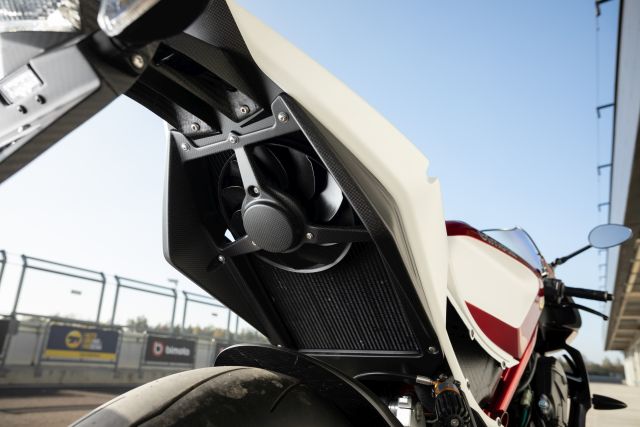
The result of the chassis engineers’ hard work is a short 1,390-millimetre wheelbase that is much shorter than the Ninja 1000SX’s (1,440 mm) and even shorter than a ZX-6R’s (1,390 mm), offset by a long swing-arm. Bodywork is mainly carbon-fibre and the lack of conventional frame reduces dry weight to just 189 kg.
It is a little confusing when comparing weights because Kawasaki’s 636-cc ZX-6R has a (fully fuelled) kerb weight of 196 kg while the 1000SX’s kerb weight is 235 kg. Bimota do quote a fuelled weight of 194 kg, but with the tank just one-quarter filled. Dry weight, meanwhile, is at 189 kg… So, I would estimate that fully fuelled, the KB4 would be around 200 kg.
Thankfully, I do not need a spec-sheet to tell the KB4 is a genuine lightweight. On the move it feels incredibly agile, making light work of Modena’s scratchy second and third-gear corners. It is a little strange as the “sports tourer” riding position is relatively relaxed even though the chassis geometry is as sharply focused, ready to turn and turn fast, as that of many pure sports bikes. It ate up Modena’s hairpins.
The tight switchback sections mid-way through the lap highlighted the easy fluidity of the KB4. Kawasaki’s Ninja 1000SX is not a bad handling bike but the Italian chassis is on another level. The KB4 is more comparable to a ZX-6R or GSX-R750 in terms of handling, but with a more relaxed riding position and a “soft” motor.
Chassis and tyres (Pirelli Supercorsa Evo) generate heaps of forensic-level grip and build enormous confidence in the rider, too. Brake ever later and deeper and there is no complaint. Get on the power sooner than you thought possible and the Bimota simply drives forward without fuss. Once, at elbow dragging levels of lean, the exhaust made a painful and expensive sound as it dragged on the track and did so before the (adjustable) foot-pegs touched the surface.
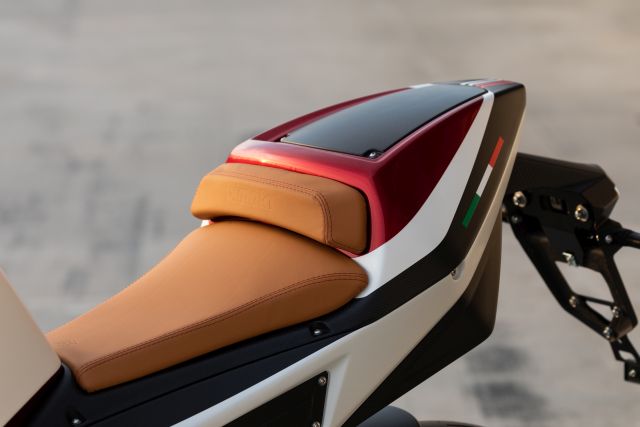
The K4 is ultra-adjustable and, with the ride height increased, ground clearance was improved to the point that the exhaust only tickled the track on the very odd occasion (and there is also an optional silencer available that is less bulky than the Kawasaki original, saving two kilos). However, I am a reasonably light 80 kg and ground clearance might become more of a limiting issue for a heavier rider on a quick lap.
That said, clearance is far better on stock settings than a Ninja 1000SX and I was riding on my limit, pushing for a lap-time and, occasionally, dragging my elbow. That is what is so impressive about the K4; like so many of its predecessors, it has inherently racy genes that make it easy to ride, even when pushing hard. There is such a strong connection between brain and tyre contact-patch, such a positive feeling that I never missed an apex all day.
The Bimota chassis is predictable, stable, accurate and light, and perfectly matched the usable power of the SX engine.
Lean-sensitive ABS is carried over from Kawasaki but re-calibrated due to the lightness of the Bimota. The KB4 uses larger 320-mm diameter discs, 20 mm larger than the Kawasaki, plus racy Brembo Stylema radial stoppers, not the SX’s Tokico items.
Performance is impressive, but this is also due to the feeling of the Öhlins front end and the lightness of the chassis. It is not at the level of stopping found on high-end sports bikes, but not far off it either. On track, the ABS is a little too obtrusive, but, for a sports tourer, possibly has market-leading stopping power. It certainly hauls up quicker than the Ninja 1000SX.
Unfortunately, we did not get an opportunity to ride on the road, but some of the excellent qualities of the Kawasaki 1000SX should get carried over to the Bimota. The KB4 shares its engine and 19.5-litre fuel-tank, so, in theory, km/l and fuel range should be about the same. Kawasaki quote 17.3 km/l and the Bimota should return around the same, possibly better because it is lighter.
Like the SX, cruise control comes as standard. The SX’s 4.3-inch TFT dash, updated in 2020, has also been adopted along with the Kawasaki’s easy-to-use switchgear and rider aids, which include a Rain mode and lower power mode for those very few who might ride the Bimota in the wet.
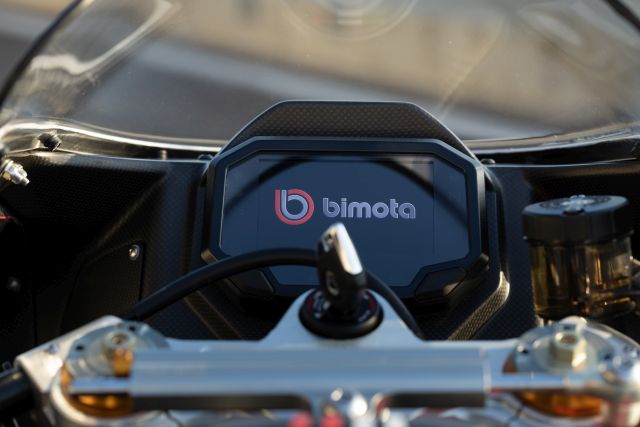
The Bimota does not have the adjustable screen and wind protection of the SX and panniers are not an option. In fact, you cannot even add a pillion and Bimota does not offer any touring accessories. But this bike does have multi-adjustable quality Öhlins suspension and the pegs are adjustable.
I found the real leather seat a little snug as the seat hump is rather close and one is up against the tank, but the riding position is natural and genuinely sports-touring in stance. I imagine the light handling, quality suspension, and brakes will work well on the road but suspect it will not be as comfortable as the SX’s. Riding all day should be do-able, though, and the prospect of tackling the mountain passes is truly alluring.
Rider aids are carried over from the SX but, as mentioned, re-calibrated for the Bimota’s lack of weight and handling. These are: Kawasaki Cornering Management Function (KCMF) and Kawasaki Traction Control (KTRC), with three levels and a de-activation option. Kawasaki Intelligent anti-lock Brake System (KIBS) and ABS are present and correct along with power modes “full” and “low”, the latter offering 75 per cent to 80 per cent of maximum power, and four riding modes: Sport, Road, Rain, and a personalised mode. The Dual-direction Kawasaki Quick Shifter (KQS) also comes as standard. All rider aids are lean-sensitive and linked to a six-axis IMU.
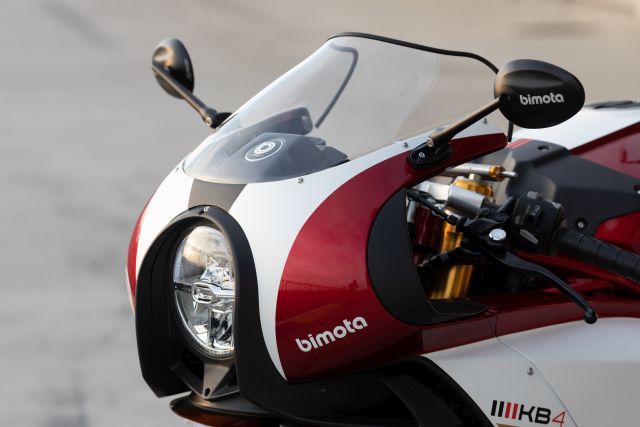
Despite the price, Bimota has not added any extra rider aids beyond the Kawasaki package. No launch control or engine braking strategy, for example. As mentioned earlier, Bimota does not offer any touring accessories, not even pillion pegs, so pillions will have to take the bus.
The KB4’s unusual looks seem to divide opinion. I was unsure when I first saw it in pictures, but now that I have seen it in metal and witnessed the engineering and quality finish up close, I have grown to like it. It is certainly different and bold and it looks like a £30,000 (Rs 30 lakh) bike. The engineering and attention to detail are to be applauded.
Dynamically, there is a lot to praise. The handling is light and easy, it works superbly on track, and should transfer its easy ability to the road. It is fun to ride—anything but overwhelming—and the chassis and suspension transmit oodles of feel and security to the rider. That smooth and torquey Kawasaki 1000SX motor feels completely at home in the Bimota, too.
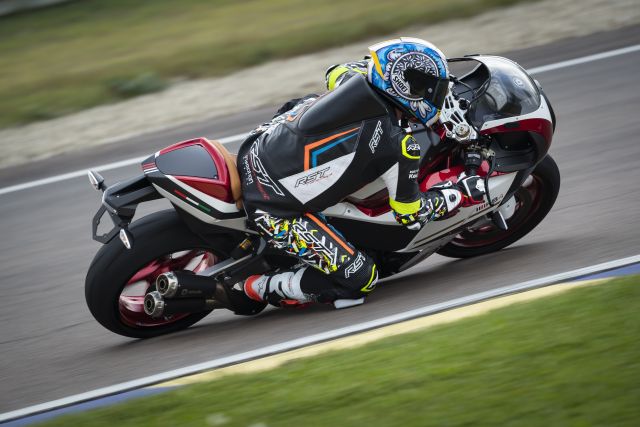
At times on the track, it was all too easy to think of the KB4 as an all-out sports bike, but the riding position is relatively relaxed and it has not just been designed to work on track. It will be interesting to see if this new “sports tourer” is as good at touring as it is at sports riding.
The only downside is the price. There are cheaper, faster, and possibly comfier alternatives with smarter electronic technology such as the Aprilia Tuono V4. But the competition cannot match the exclusivity and desirability of the KB4.
Technical Specification
Bimota KB4
Price: £30,000 (Rs 30 lakh)
Capacity: 1,043 cc
Bore x Stroke: 77.0 x 56.0 mm
Engine: Water-cooled, in-line four-cylinder
Valvetrain: DOHC, 16-valve
Power: 142 hp at 10,000 rpm
Torque: 111 Nm at 8,000 rpm
Top speed: 260 km/h (estimated)
Transmission: Six-speed, up/down quick-shifter
Tank size: 19.5 litres
Rider aids: Power modes, four rider modes, lean-sensitive traction control, lean-sensitive ABS, up-and-down quick-shifter, cruise control
Frame: Steel trellis front only
Front suspension: 43-mm Öhlins front NIX30 fork, 130-mm travel, fully adjustable
Rear suspension: Öhlins single TTX36 shock, 122-mm travel, fully adjustable
Front brake: Twin 320-mm discs, four-pot Brembo calipers, Cornering ABS
Rear brake: Single 220-mm disc, two-pot Brembo caliper, Cornering ABS
Front wheel: 17-inch, alloy
tyre: 120/70 ZR17, Pirelli Supercorsa Evo
Rear wheel: 17-inch, alloy
tyre: 190/50 ZR17, Pirelli Supercorsa Evo
Wheelbase: 1,390 mm
Seat height: 802-818 mm
Weight: 189 kg (dry), 194 kg (kerb)
Warranty: 24 months
Website: www.bimota.it

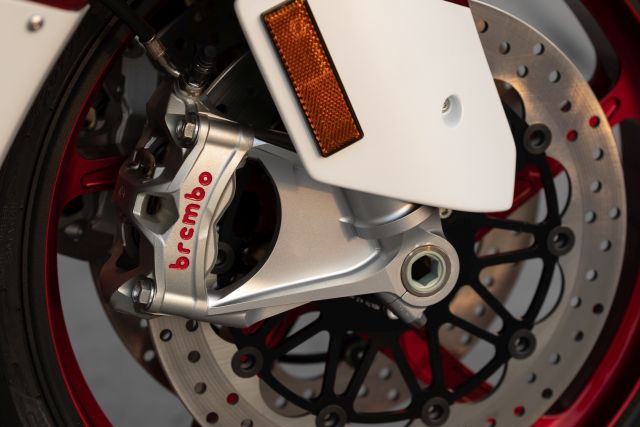
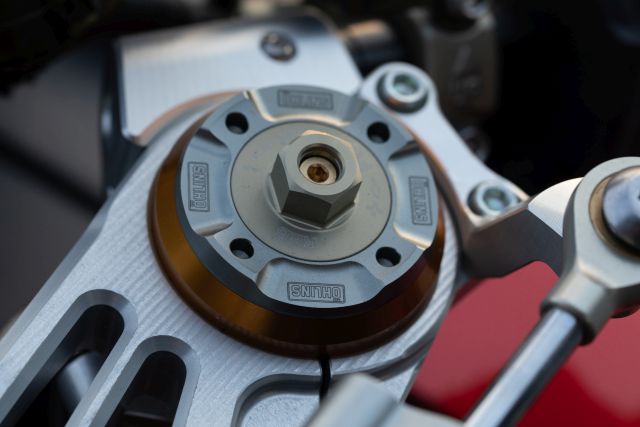

Leave a Reply